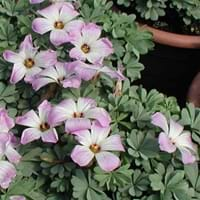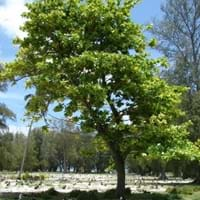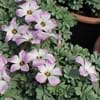Life Span
Perennial
Perennial
Type
Bulb or Corm or Tuber
Fruit, Perennial, Tree
Origin
Argentina, Chile
Africa, Asia, Australia
Types
Not available
Not Available
Habitat
Shaded sites, Woodlands
Subtropical climates, Tropical areas
USDA Hardiness Zone
7-9
Not Available
AHS Heat Zone
10-3
Not Available
Sunset Zone
21,22
Not Available
Habit
Clump-Forming
Spreading
Flower Color
White, Fuchsia, Rose, Violet
Non Flowering Plant
Flower Color Modifier
Bicolor
Not Available
Fruit Color
Not Available
Dark Brown, Green
Leaf Color in Spring
Light Green, Gray Green
Dark Green
Leaf Color in Summer
Light Green
Green
Leaf Color in Fall
Several shades of Green
Red
Leaf Color in Winter
Light Green
Red
Leaf Shape
Heart-shaped
Broadly Ovate
Plant Season
Spring, Summer, Fall
Summer
Sunlight
Full Sun, Partial Sun, Partial shade
Full Sun, Partial Sun
Type of Soil
Clay, Loam, Sand
Loam
The pH of Soil
Neutral
Acidic, Neutral
Soil Drainage
Well drained
Well drained
Bloom Time
Late Spring, Early Summer, Summer, Late Summer, Early Fall, Fall
Summer
Tolerances
Drought
Dry soil
Where to Plant?
Ground, Pot
Container, Ground
How to Plant?
Divison, Seedlings
Seedlings, Stem Planting
Plant Maintenance
Medium
Low
Watering Requirements
Water in the early morning hours
Needs less watering
In Summer
Lots of watering
Ample Water
In Spring
Moderate
Moderate
In Winter
Average Water
Average Water
Soil pH
Neutral
Acidic, Neutral
Soil Type
Clay, Loam, Sand
Loam
Soil Drainage Capacity
Well drained
Well drained
Sun Exposure
Full Sun, Partial Sun, Partial shade
Full Sun, Partial Sun
Pruning
Remove damaged leaves, Remove dead branches, Remove dead leaves
Remove dead branches, Remove dead leaves
Fertilizers
All-Purpose Liquid Fertilizer
All-Purpose Liquid Fertilizer
Pests and Diseases
Red blotch
Not Available
Plant Tolerance
Drought
Dry soil
Flower Petal Number
Single
Not Available
Foliage Texture
Medium
Fine
Foliage Sheen
Matte
Glossy
Allergy
Asthma, Depression
Asthma
Aesthetic Uses
Cottage Garden, Formal Garden, Ground Cover, Showy Purposes
Showy Purposes
Beauty Benefits
Not Available
Making cosmetics
Environmental Uses
Air purification
Air purification, Food for birds
Medicinal Uses
Not Available
Energy, Minerals, ß-carotene, Vitamin A, Vitamin C, Vitamin E
Part of Plant Used
Flowers
Fruits
Other Uses
Basketary
Grown for shade, Used As Food
Used As Indoor Plant
No
No
Used As Outdoor Plant
Yes
Yes
Garden Design
Alpine, Container, Houseplant, Mixed Border, Rock Garden / Wall
Edible, Fruit Tree
Botanical Name
OXALIS adenophylla
Terminalia catappa
Common Name
Chilean Wood Sorrel, Pink Buttercups, Pink Carpet Oxalis, Silver Shamrock
Bengal almond, country almond, false kamani, Indian almond, Malabar almond, sea almond, tropical almond
In Hindi
Chilean Wood Sorrel
जंगली बादाम
In German
Chilean Wood Sorrel
Katappenbaum, Seemandelbaum, Indische Mandel
In French
Chilean Wood Sorrel
Badamier
In Spanish
Chilean Wood Sorrel
almendro malabar, almendro de los trópicos, almendrón, falso kamani, Egombegombe
In Greek
Chilean Wood Sorrel
Ινδικό αμύγδαλο
In Portuguese
Chilean Wood Sorrel
amêndoa, amendoeira, castanheira, anoz, árvore-de-anoz, castanholeira, coração-de-nego, castanhola, sete-copas, chapéu-de-sol, guarda-sol, terminália, figueira-da-índia
In Polish
Chilean Wood Sorrel
Migdałecznik właściwy
In Latin
Chilean Wood Sorrel
inti almont
Phylum
Magnoliophyta
Magnoliophyta
Class
Magnoliopsida
Magnoliopsida
Order
Oxalidales
Myrtales
Family
Oxalidaceae
Combretaceae
Genus
Oxydendrum
Terminilia
Clade
Angiosperms, Eudicots, Rosids
Angiosperms, Eudicots, Rosids
Tribe
Not Available
Not Available
Subfamily
Not Available
Not Available
Difference Between Chilean Wood Sorrel and Indian Almond
If you are confused whether Chilean Wood Sorrel or Indian Almond are same, here are some features about those plants to help you choose better. Many people think that these two plants have the same characteristics, but one can see Chilean Wood Sorrel and Indian Almond Information and learn more about it. Fertilizers required for proper growth of Chilean Wood Sorrel are All-Purpose Liquid Fertilizer, whereas for Indian Almond fertilizers required are All-Purpose Liquid Fertilizer. Hence, one should know the basic difference between Chilean Wood Sorrel and Indian Almond if you are planning to have them in your garden to enhance its beauty.
<
Flowering PlantsImportance of Chilean Wood Sorrel and Indian Almond
Want to have the most appropriate plant for your garden? You might want to know the importance of Chilean Wood Sorrel and Indian Almond. Basically, these two plants vary in many aspects. Compare Chilean Wood Sorrel and Indian Almond as they differ in many characteristics such as their life, care, benefits, facts, etc. Every gardener must at least have the slightest clue about the plants he wants to plant in his garden. Compare their benefits, which differ in many ways like facts and uses. The medicinal use of Chilean Wood Sorrel is Not Available whereas of Indian Almond is Energy, Minerals, ß-carotene, Vitamin A, Vitamin C and Vitamin E. Chilean Wood Sorrel has beauty benefits as follows: Not Available while Indian Almond has beauty benefits as follows: Not Available.
Compare Facts of Chilean Wood Sorrel vs Indian Almond
How to choose the best garden plant for your garden depending upon its facts? Here garden plant comparison will help you to solve this query. Compare the facts of Chilean Wood Sorrel vs Indian Almond and know which one to choose. As garden plants have benefits and other uses, allergy is also a major drawback of plants for some people. Allergic reactions of Chilean Wood Sorrel are Asthma and Depression whereas of Indian Almond have Asthma respectively. Having a fruit bearing plant in your garden can be a plus point of your garden. Chilean Wood Sorrel has no showy fruits and Indian Almond has no showy fruits. Also Chilean Wood Sorrel is not flowering and Indian Almond is not flowering . You can compare Chilean Wood Sorrel and Indian Almond facts and facts of other plants too.





